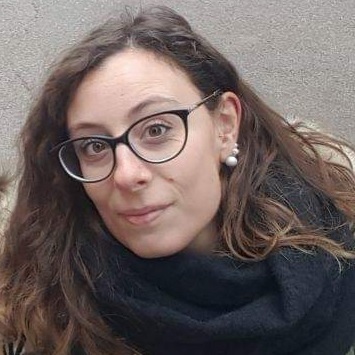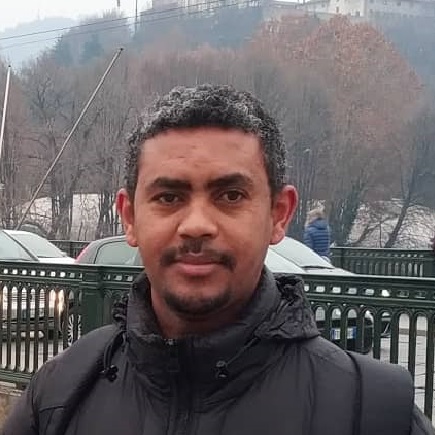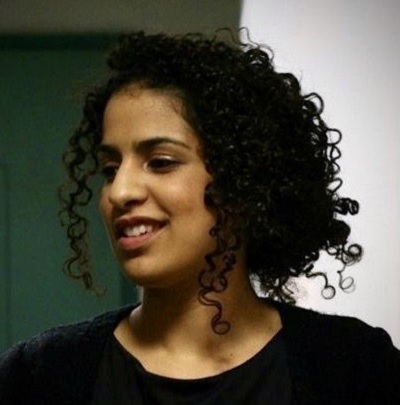GRADUATED PhD
The group is involved in different PhD courses. Nowadays, Prof. Alessandro Lo Giudice and Prof. Alessandro Re have an active role in the following PhD:
- Technology Driven Sciences:
Technologies for Cultural Heritage (T4C)
- Physics
- Chemical and Materials Sciences
- Heritage Science
In particular they are part of the scientific board of the T4C PhD, specifically focused on technologies applied to Cultural
Heritage, and of the National PhD in Culturale Heritage. Moreover they partecipate to the PhD in Metrology
at the Politecnico di Torino.
 Giulia SORRENTINO
Giulia SORRENTINO
PhD in Technology Driven Sciences: Technologies for Cultural Heritage (T4C), XXXV Cycle
Final discussion: 2023 October 31th
Title: Retrieve a novel: new multi-scale surface texture analysys of Ground Stone Tools
Academic supervisor: A. Lo Giudice, L. Longo
Commitee: R. Damiano, A. Pawlik, C. Putignano
Abstract: Stone implements have been used since the early stages of humankind as tools for processing different resources, one of the most direct actions being
pounding and grinding. Identifying the function(s) of this kind of tools, namely ground stone tools and distinguishing them from manuports is not a simple task when analysed with
conventional approach. Therefore, they are underrepresented in the archaeological record and poorly studied also due to methodological constraints, e.g. heuristic requirements,
equipment availability, and time restraints. This project aims to set up an investigative approach for the comprehension of ground stone tools' function and the processes in which
they were involved, in order to REVEAL the artefacts complex biography..
|
 Leandro SOTTILI
Leandro SOTTILI
PhD in Technology Driven Sciences: Technologies for Cultural Heritage (T4C), XXXV Cycle
Final discussion: 2023 July 12th
Title: Design and development of a benchtop X-Ray based instrument and its heritage science applications
Academic supervisor: A. Re
Commitee: R. Giustetto, A. Galli, L. Ramello
Abstract: The aim of the project is to develop a multiple techniques apparatus for Cultural Heritage studies, such as archaeological finds and paintings,
in Turin. The instrument will be an upgrade of the X-Ray Fluorescence (XRF) scanner developed by the INFN-CHNet collaboration the network of the Italian National Institute
for Nuclear Physics (INFN) devoted to Cultural Heritage.
|
 Luisa VIGORELLI
Luisa VIGORELLI
PhD in Metrology (Politecnico of Torino), XXXV Cycle
Final discussion: 2023 July 12th
Title: Dimensional measurements with X-ray Computed Tomography and application to Cultural Heritage
Academic supervisor: A. Re, S. Grassini
Commitee: G. Perrone, D. Di Martino, R. Sacchi, C. Trigona, J.M. Tulliani
Abstract: The aim of this research project is the characterization from a metrological point of view of innovative instruments for imaging
based on X-rays. The characteristics evaluation of measuring instruments is of fundamental importance in the field of
scientific research: in order to define their performance, it is necessary to analyze the limits and inaccuracies of
instruments, obtaining all the information for the correct use and allowing the user to obtain the best results in all
the possible conditions.
|
 Abraham ZERAI GEBREMARIAM
Abraham ZERAI GEBREMARIAM
PhD in Technology Driven Sciences: Technologies for Cultural Heritage (T4C)
Final discussion: 2022 April 22th
Title: Comprehensive Archaeometric Study of Ayla-Aksum Amphorae from Adulis, Red Sea Coast of Eritrea
Academic supervisors: A. Lo Giudice
Commitee: M. Gulmini, A. Manzo, A. Mangone
Abstract: This research centres on a comprehensive archaeometric study of amphorae assemblages recovered from excavations in the archaeological site of Adulis
in the Red Sea Coast of Eritrea. The study of the so called Ayla-Aksum amphorae, which are among the most widespread vessels for trading products
in the Red Sea region between the 4th and 7th century CE, is tackled for provenance attribution. These amphorae assemblages are presumed to have been produced
in the kilns of present day Aqaba in Jordan and yet due to their wider circulation in the Red Sea ports in antiquity compelled archaeologists to hypothesize
other production centers might have existed elsewhere.
|
 Leila ES SEBAR
Leila ES SEBAR
PhD in Metrology (Politecnico of Torino)
Final discussion: 2022 March 25th
Title: Metrology for Cultural Heritage: multispectral 3D models by photogrammetry
Academic supervisors: S. Grassini, A. Re
Commitee: F. Di Franco, F. Lamonaca, L. Ciani, A. Gueli, G. Perrone
Abstract: This dissertation deals with the metrological validation of a digitalization approach that combines
the use of photogrammetry and multispectral imaging (MSI) techniques in the field of Cultural Heritage. Photogrammetry is a technique
that is becoming more and more diffused for the creation of 3D realistic virtual replicas of historical artefacts since it allows
the extraction of three-dimensional information about the geometry and overall appearance of an item from 2D digital images. On the
other hand, MSI techniques are widely diffused, since they allow the detection and identification of the materials used by the artists
based on their response to different wavelengths.
|
 Laura Guidorzi
Laura Guidorzi
PhD in Chemical and Materials Sciences
2021 March
Title: Physico-chemical characterization of diopside in lapis lazuli: a study from luminescence activators and quenchers to material provenance investigations
Academic supervisors: A. Lo Giudice, A. Re
Commitee: L. Giuntini, L. Maritan, E. Vittone
Abstract: The main aim of this PhD work was to focus on the diopside mineral phase inside lapis lazuli to better understand
the synchronous mechanisms that link luminescence emission and trace element composition, looking for correlations among them and studying the activation and quenching phenomena.
Alongside this fil rouge, it was possible to deepen the knowledge on the characterization of both raw and carved lapis lazuli, analysing samples from Myanmar quarries and from
several archaeological sites of South and Southwest Asia.
|
 Debora ANGELICI
Debora ANGELICI
PhD in Earth Science
2015 February
Title: Petrographic and minero-chemical characterisation of lapis lazuli: a provenance study of rocks and artefacts from Cultural Heritage
Academic supervisors: A. Borghi, A. Lo Giudice, G. Vaggelli
Commitee: G. Artioli, M. Benvenuti, R. Giustetto
Abstract: the work firstly aimed at performing a systematic characterisation of rock samples
of known provenance, in order to create a database with the identified minero-chemical markers useful to discriminate different
quarry districts. The second aim was the application of the protocol tested with the rock samples, analysing precious artefacts in
non-invasive way to obtain information about the provenance of the raw material used for their realisation.
|
 Jacopo CORSI
Jacopo CORSI
PhD in Chemical and Materials Sciences
2015 January
Title: Multi-technique study of coins circulating in northern Italy between 4th and 1st century BC
Academic supervisors: A. Lo Giudice, F. Barello
Commitee: I. Degano, M. Gulmini, P. Piccardo
Abstract: this research project aims to bring new light on two different silver coinages circulating
between 4th and 1st century B.C. in the Cisalpine Gaul, ancient name of northern Italy: the drachma, minted by Celtics and native populations,
and the Roman victoriatus.
|
 Alessandro RE
Alessandro RE
PhD in Physics
2011 March
Title: Optical, electron and ion microscopy in the field of Cultural Heritage: a provenance study of lapis lazuli.
Academic supervisor: A. Lo Giudice
Examiner: T. Calligaro, CNRS - France
Abstract: ion beam analysis are widely used to characterize materials of archaeological, historical and artistic interest
because they do not require any sample preparation, they can be performed in air and they do not damage the sample at low ion fluences.
An interesting material to be analyzed by means of Ion Beam Analysis is lapis lazuli.
|
Silvia CALUSI
PhD in Materials and Nanosystems Science and Technology
2010 January
Title: Set up and applications of microanalysis techniques on innovative materials of technological and cultural heritage
interest by using external beams and microbeams of low energy ions.
Academic supervisor: C. Manfredotti
Examiner: P. Sellin, University of Surrey - UK
|